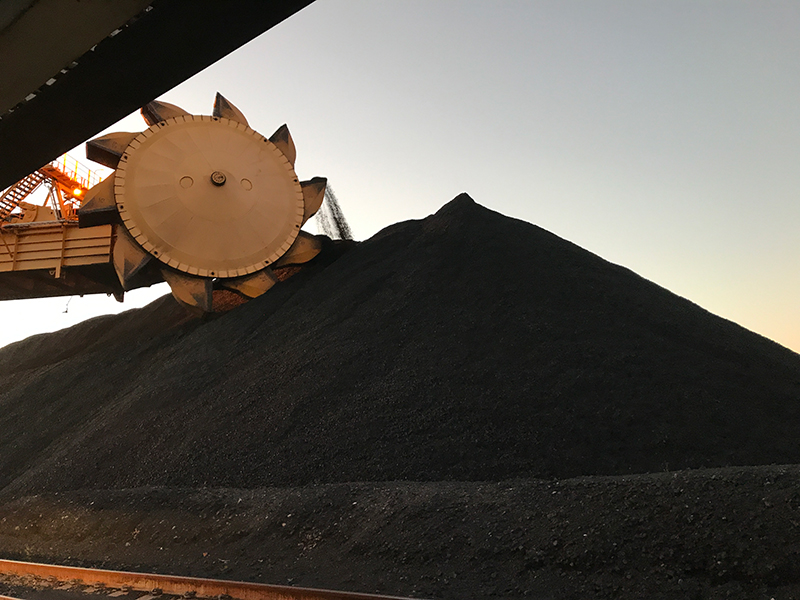Australian energy facts
Last updated:1 September 2023
Non-renewable resources cannot be replaced at a rate that is sustainable. Fossil fuels such as oil, natural gas and coal are examples of non-renewable resources and they cannot be replaced as quickly as they are being used. The reason they are called fossil fuels is because they take billions of years to form naturally, from the remains of ancient plants and animals. In contrast, resources that are referred to as renewable energy sources can be used again and again, without depletion, or can be replenished in a short time frame (e.g. timber can be harvested and then more trees replanted). The wind, sun (solar) and waves are all sources of renewable energy.
Australia has an abundance of renewable and non-renewable energy sources including fossil fuels. Our energy resources power our homes, cars and industry, and are a key contributor to Australia's economic prosperity. The demand for energy is increasing as Australia's economy and population grow.
Non-renewable energy resources
Australia's energy needs are still mostly met by fossil fuels. Australia's coal resources are used to generate three-quarters of domestic electricity; natural gas is found in many homes and is increasingly used in industry; and Australia's transport system is heavily dependent on oil, some of which is imported.
Non-renewable energy resources found and extracted in Australia include Coal and Uranium and Thorium.
Renewable energy resources
Australia's renewable resources are widely distributed across the country, and although their use is increasing, they still only account for a relatively small proportion of Australia's primary energy consumption and electricity generation. Hydro energy resources were developed early in Australia and are currently the largest renewable source of electricity. Hydro energy is derived from water within areas of high rainfall and elevation (mostly in New South Wales and Tasmania). The wind and solar energy industries are growing rapidly, with wind and solar farms becoming more common. There has also been significant investment in research and development aimed at increasing the efficiency and cost-effectiveness of wind and solar power, including the development of solar thermal power stations.
In addition, Australia has geothermal, wave and tidal resources. Geothermal energy in Australia is in the form of buried, high-heat producing rocks. Australia has a world-class wave energy resource along its western and southern coastline, especially in Tasmania and the best tidal resources are located in the north of the country, especially along the northwest coast of Western Australia. Bioenergy is another significant potential energy resource. Organic matter (e.g. landfill or sugar cane waste) can be used to generate electricity and heat, as well as for the production of liquid fuels (biofuels) for transport.
Energy Links
National
The Australian Energy Resource Assessment provides a detailed review of Australia's energy resources, from fossil fuels and uranium to renewable energy, including a review of known and potential resources, technologies for extraction, and projected energy use and production in 2030.
Geoscience Australia houses the National Mineral and Fossil Collection, an impressive selection of some 15 000 mineral and 100 000 fossil specimens including uranium and thorium ores. Due to radioactivity these specimens are not on display but can be viewed through an online exhibit called Hot Rocks hosted by Google Arts & Culture.
The Queensland Resources Council hosts Oresome Resources a website that provides a wide range of educational resources to support teaching and learning about minerals and energy.
New South Wales
The New South Wales Department of Primary Industries offers mineral factsheets relating to commodities found in New South Wales.
Northern Territory
The Northern Territory Government provides a guide to Mining and Energy the Northern Territory.
Queensland
The Queensland Government supports the Queensland Minerals and Energy Academy an industry/education schools partnership between the Queensland resources industry and the government. The Academy assists students with their understanding of, and exposure to, the resources sector and related career paths.
South Australia
The South Australian Government provides educational resources for teachers including information on the topics energy and using earth resources.
Victoria
The Victorian Government offers an overview of Victoria's geology. The government also provides information on coal and gas and other commodities produced in Victoria.
Western Australia
Earth Sciences Western Australia (ESWA) is a consortium of universities, the CSIRO, Minerals, Oil and Gas Industry partners, and other public and private organisations. They have collaborated to develop a suite of Earth and Environmental Science (EES) resources, materials and teacher training.
The Department of Mines and Petroleum produces flyers on Western Australian energy commodities. These contain a map showing the distribution of deposits, deposit types, resources per deposit, and list of major producers and their production.
